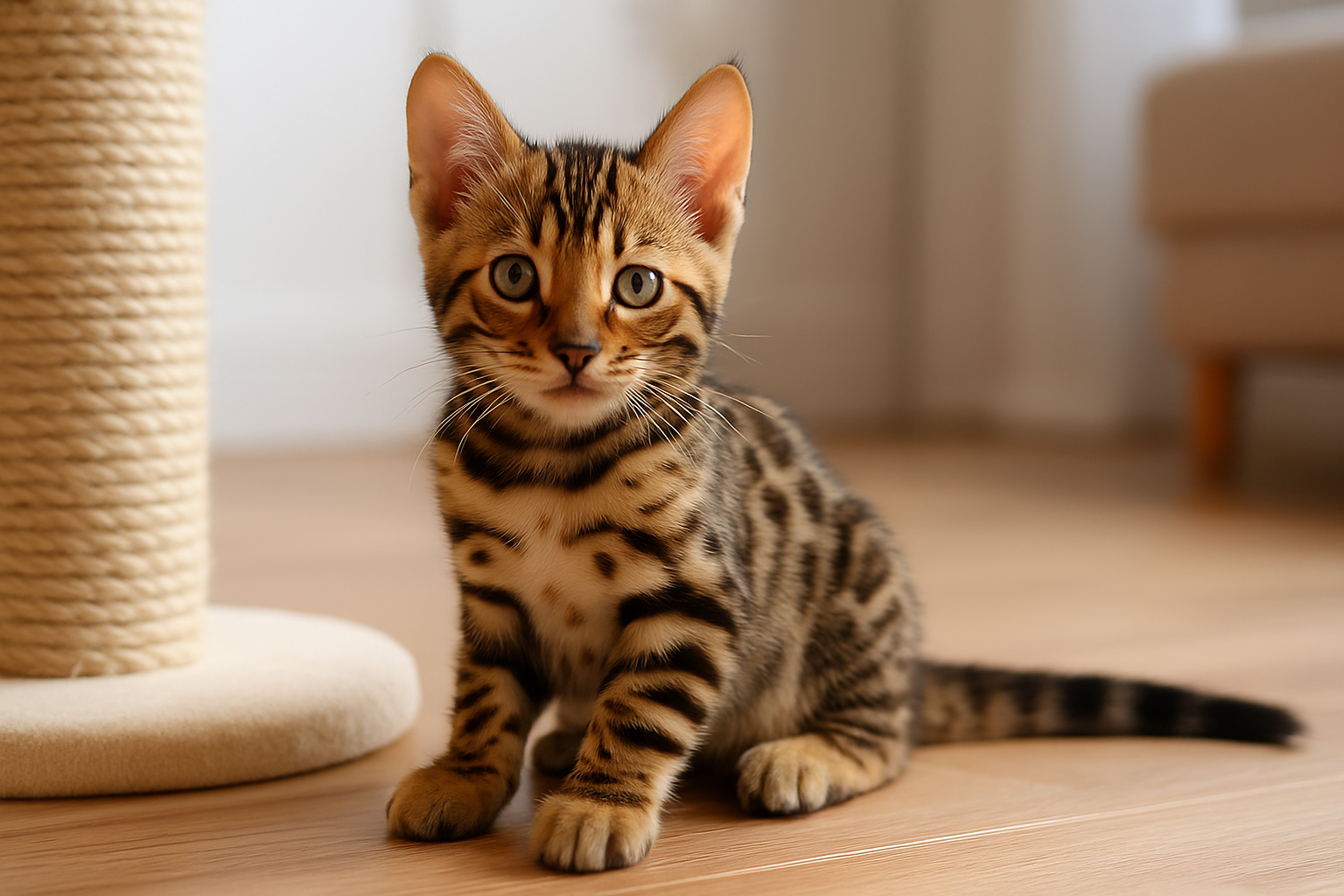If you’re raising a Bengal kitten, get ready for a whirlwind of play, purring, and personality. These little spotted beauties are more than just good looks—they’re smart, high-energy, and incredibly curious. But with the right setup, Bengal kittens can grow into healthy, happy companions who keep you smiling every day.
In this guide, we’ll walk you through the basics of Bengal kitten care—from feeding and playtime to grooming and health. Whether you’re a first-time kitten parent or just new to the Bengal breed, here’s what you need to know.
What to Expect from a Bengal Kitten
Bengals are known for their wildcat looks, but they’re anything but wild at heart. These kittens are playful, outgoing, and often very attached to their people. They love to climb, explore, and get into everything—so don’t be surprised if your kitten is up on the counter or darting through the house at top speed.
They’re also one of the most intelligent cat breeds, which means they’ll learn routines quickly—and figure out how to open cabinets if they’re bored. The key to raising a happy Bengal kitten? Keep them busy, keep them engaged, and don’t leave them alone for too long.
Feeding Your Bengal Kitten
Nutrition plays a big role in your Bengal kitten’s development. Because they’re so active, Bengals do well on a high-protein diet with real meat as the first ingredient. A mix of high-quality wet and dry food works well for most kittens.
Make sure your kitten stays hydrated too. Bengals can be prone to kidney issues later in life, so a water fountain can encourage more drinking and support long-term health.
Playtime and Enrichment
A bored Bengal is a mischievous Bengal. These kittens need plenty of stimulation, both mental and physical. Plan on having several short play sessions throughout the day—and rotate their toys to keep things fresh.

Cat trees, wall shelves, and tunnels are all great ways to create a Bengal-friendly environment. These cats love to climb and observe their territory from up high.
You can also use puzzle feeders to challenge their brain while offering snacks. It’s enrichment and bonding time all in one.
Grooming and Health
Even though Bengals have short coats, they still benefit from weekly brushing. It helps reduce shedding and gives you a chance to check for any skin issues or parasites.
Start brushing your kitten’s teeth early and get them used to nail trims. Regular vet visits are also important to catch any potential health issues early, especially heart conditions, which can affect some Bengals.
Setting Up Your Home
Before bringing home a Bengal kitten, make sure your space is kitten-safe and stimulating. They’ll need:
- A large litter box (Bengals grow fast!)
- Sturdy scratching posts
- Vertical space like a cat tree or wall shelves
- Interactive toys and puzzles
- Fresh water (ideally a fountain)
Try to place their litter box in a quiet but accessible spot, and keep food and water dishes away from it. Bengals are tidy and often picky about their setup.
What It’s Like Living with a Bengal
Life with a Bengal kitten is never dull. These cats love to follow you around, “talk” to you, and be involved in whatever you’re doing. They’re affectionate, but not always cuddly in the traditional sense—they prefer playing, exploring, or snoozing beside you rather than being held for long periods.
They also do best in households where someone is around during the day or where they have another pet to interact with. Left alone too long, a Bengal can get lonely—and into trouble.
But if you’re ready for an energetic, intelligent companion with a dash of mischief, a Bengal kitten might just be your perfect match.
Final Thoughts
Raising a Bengal kitten takes time, energy, and a bit of creativity—but it’s more than worth it. With the right care and environment, you’ll have a stunning, social, and playful cat who brings joy and excitement to your home for years to come.
Still shopping for kitten gear? Check out our picks for the best cat trees for active breeds.





